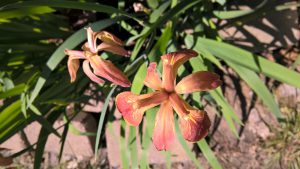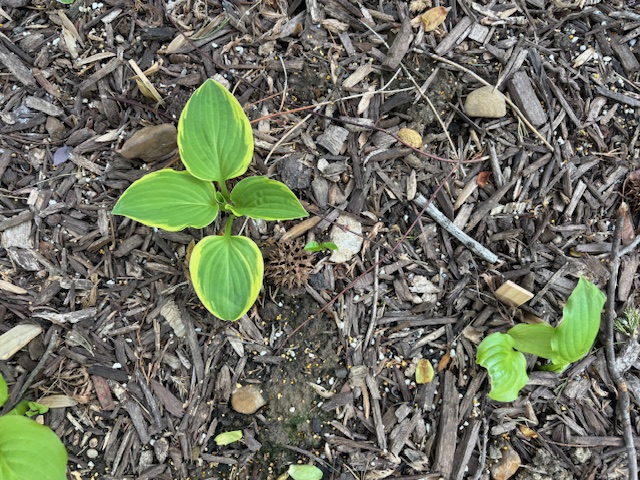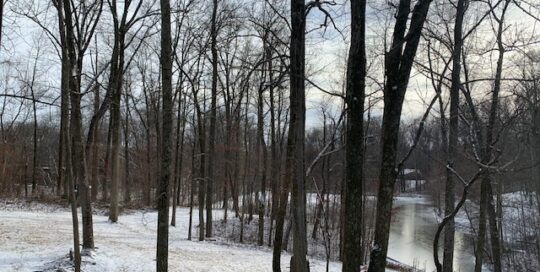Iris Addict
Views: 4930

“Hello, my name is Dona and I am an Iris addict.”
Who doesn’t love an iris? Only by exercising severe self-control do I manage to refrain from buying one of each kind out of my favorite catalogs. It’s definitely an addiction and there’s no “Twelve Step Program” to cure me.
The huge and gorgeous bearded flower (sometimes called “German Iris”) are what most of us have in our gardens, but there are some lessor known irises native to the southeast and Midwestern sections of the U.S. which are quite lovely and worth a spot in your gardens.
Copper Iris
Copper Iris (Iris fulva) is a species of Louisiana flower. Its blooms are a coral / apricot / bronze-ish color and all its petals droop away from the center, unlike the upright standards of the bearded iris (see the photo). This one loves a lot of moisture, even boggy areas or standing water. Hardy from about Zones 5 to 9, it doesn’t mind clay soils and does all right in part shade. Hummingbirds love the blooms, which is always a plus for me. It’s classified as endangered or threatened in some states due to loss of habitat.
There are hundreds of other Louisiana Iris cultivars, all of which like similar growing conditions as the Copper Iris.
Virginia Iris
Virginia Iris (Iris virginica) is another water-loving flower, native to the eastern two-thirds of North America; you may have heard it called “Southern Blue Flag”. Bloom colors vary from dark violet to pinkish-white. Grow this one in full sun and keep it nice and moist (think rain garden or plant it at the edge or even in the shallow section of a pond. Deer tend to avoid all iris I’ve ever had and so far, (knock wood), they’ve left this one alone too.
Crested Iris
Crested Iris (Iris cristata) is a tiny (3″ to 4″ tall) delicate beauty – I was beside myself when I found it growing in a southwest facing pond bank on our land. My Wonderful Husband got carried away with the weedeater one year and took out the plants shading the flowers, leaving them in full sun. They must be tougher than they look, because they survived. Native to all the temperate regions of North America (Zones 3 to 9), the blooms can be dark blue or purple to pale blue or lilac.
They can spread by rhizomes, but I actually found some more volunteers way up the hill from the patch by the pond. These volunteers are clearly marked so there are no more weedeater accidents! Grow this tiny jewel in full sun (keep it moist) to part shade. The hungry deer don’t seem to like them much – always a plus! There are several cultivars available, including an all-white “Alba”.
Please don’t harvest these native flowers from the wild. Your state may view them as endangered or threatened. Just check on line and you can find them for sale. They are as easy to grow as any other iris, delicate, lovely and unusual. Just don’t buy the Yellow flag (see below)!
Yellow flag
Some states consider the yellow flag (Iris pseudacorus) a.k.a. yellow iris, water flag, as a noxious weed. It’s a beautiful, water-loving, yellow-blooming unwelcome invader (sort of like your ex-boyfriend’s new girlfriend). It’s fast-growing and can out-compete native plants, messing around with Mother Nature. Don’t buy this plant, don’t plant this plant, and if you have it, do Mother Nauture a favor and get rid of it.
Meet Dona Bergman
Dona Bergman is a founding member, Southwest Indiana Chapter of the Indiana Native Plant & Wildlife Society, and an Advanced Master Gardener.







